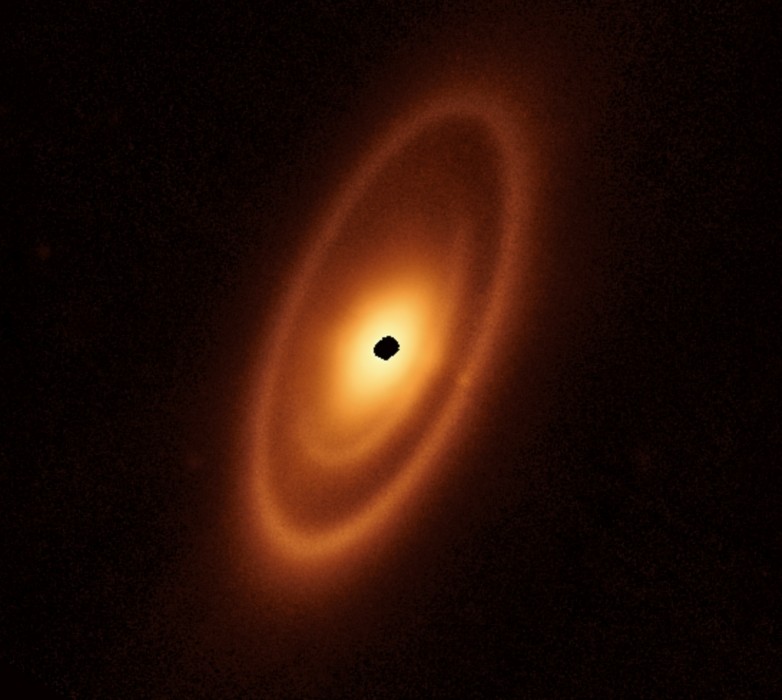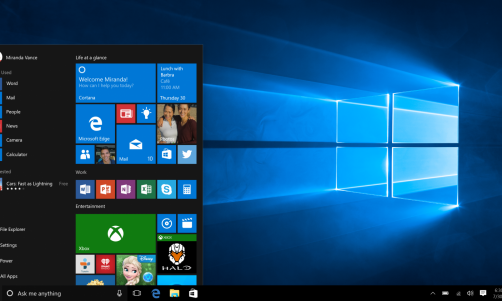NASA's James Webb Space Telescope (JWST or Webb for short) found a solar system largely unlike ours.
Astronomers recently found three asteroid belts within a solar system formed around the young star Formalhaut, a star located relatively close to Earth and our own solar system.
The research regarding the asteroid belts' discovery was published in the science journal "Nature Astronomy."
Formalhaut Soalr Syatem Details

This image of the dusty debris disk surrounding the young star Fomalhaut is from Webb’s Mid-Infrared Instrument (MIRI). It reveals three nested belts extending out to 14 billion miles (23 billion kilometers) from the star. The inner belts – which had never been seen before – were revealed by Webb for the first time.
Astronomers who used Webb to look upon Formalhaut found three asteroid belts within the solar system around it, with two of them being in it and the third being farther out than them.
According to NASA, the astronomers chose to aim Webb at Formalhaut, also known as Alpha Piscis Austrini, to image the warm dust around it to study the first asteroid belt ever seen outside our solar system in infrared light. They discovered that the three asteroid belts extend out to 14 billion miles from Faormahault - 150 times the distance of Earth from the Sun.
Astronomers previously aimed the bus-sized Hubble Space Telescope and the telescopes of the Herschel Space Observatory and Atacama Large Millimeter/submillimeter Array (ALMA) at Formalhaut before. However, None of them found any structure interior to it until Webb did.
These asteroid belts consist of debris from collisions of larger bodies and are frequently described as "debris disks" due to the debris being comparable to asteroids and comets. András Gáspár of the University of Arizona in Tucson and lead author of the study in question said that he would describe the debris disks around Fomalhaut as the archetype of debris disks found elsewhere in the Milky Way galaxy because it has components similar to those we have in our own solar system.
Read More: LinkedIn Lays Off Over 700 Employees To 'Streamline Operations'
"By looking at the patterns in these rings, we can actually start to make a little sketch of what a planetary system ought to look like - If we could actually take a deep enough picture to see the suspected planets," Gáspár said.
Currently, astronomers are simultaneously using Hubble, ALMA, and Webb to assemble a holistic view of the debris disks around several stars like Formalhaut. Schuyler Wolff, another team member at the University of Arizona, said that while Hubble and ALMA helped astronomers understand how outer disks form and evolve, they need Webb to photograph a dozen or so asteroid belts elsewhere.
Wolff added that they could learn just as much about the inner warm regions of these disks as Hubble and ALMA taught us about the colder outer regions.
James Webb Space Telescope Capabilities
Webb's use of infrared light helped astronomers see the other two asteroid belts within the solar system around Formalhaut, with Wlff saying that they can "physically resolve the thermal glow from dust in those inner regions" thanks to Webb's infrared capabilities.
Webb has two cameras that can use infrared light to observe the celestial objects it is aimed at. Its Near Infrared Camera can detect the earliest stars and the formation of galaxies.
It can also discover the population of stars in the nearby galaxies and the young stars located in the Milky Way and Kuiper Belt objects.
Meanwhile, its Mid-Infrared Instrument, jointly created by NASA and the European Space Agency, allows the telescope to detect longer infrared wavelengths, per NASA's page on the matter.
Related Article: James Webb Space Telescope Captures, Studies Supernova Remnant













